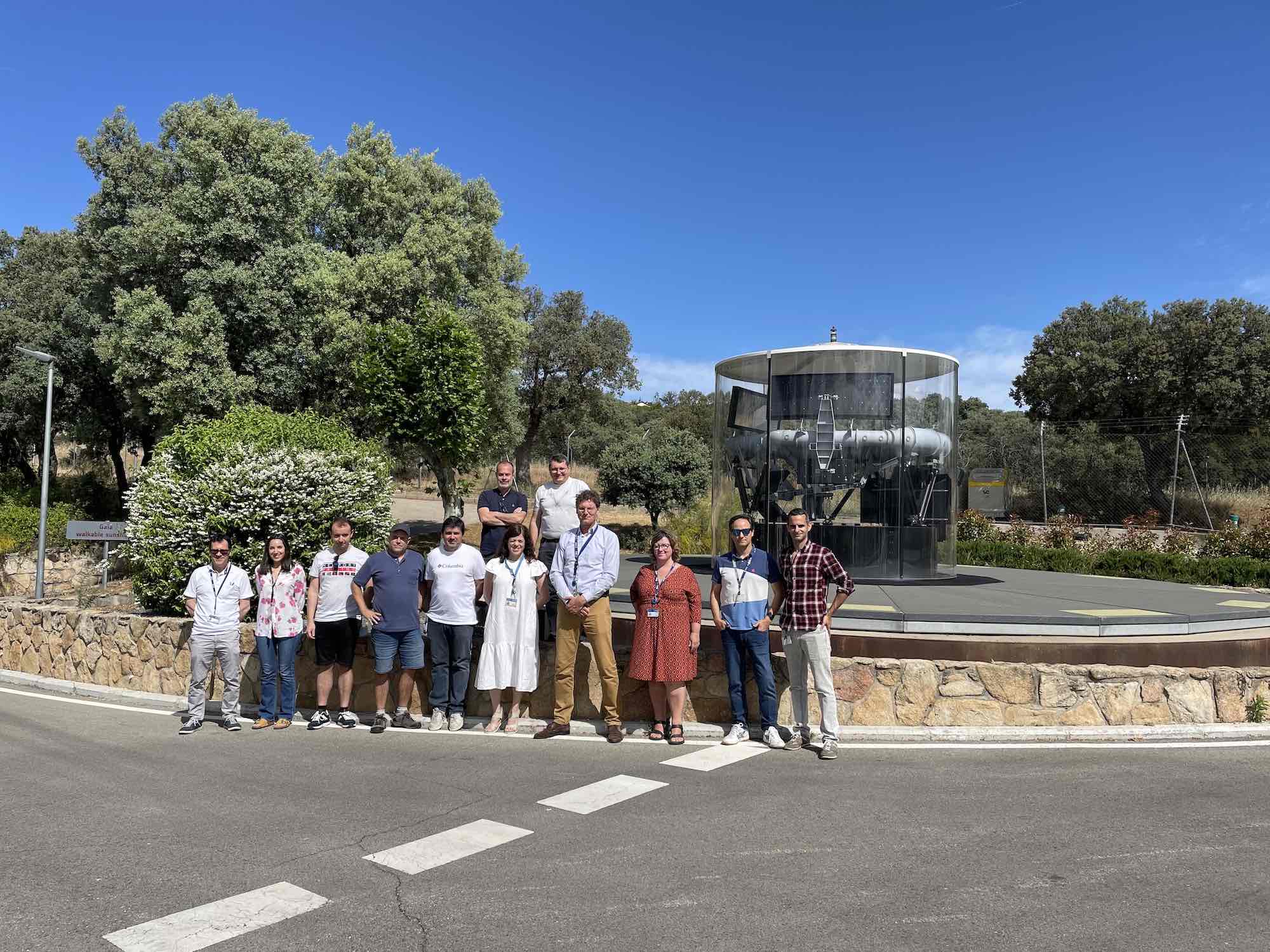Where is the DR3 data? - Gaia
Where is the DR3 data?
The archives at ESAC and the people behind
Group picture taken in front of the Gaia 1:1 model of a part of the Astronomy Survey Missions Archives Development Team "at large" working at the European Space Astronomy Centre. Image credit: ESA/Gaia/DPAC.
The ESAC Science Data Centre (ESDC), located at the European Space Astronomy Centre (ESAC, Madrid, Spain), operates with the motto “Presenting, Promoting, and Preserving Reliable Space Science Data”. It houses a team of experienced software engineers and scientists and provides services and tools to access and retrieve observations and data from ESA's space science missions across all scientific disciplines, from astronomy, through planetary science, to heliophysics.
The Gaia ESA Archive (GEA), which is developed and maintained by the Astronomy Survey Missions Archives Development Team, also resides at ESDC. The Gaia Archive has been designed to (i) allow easy access and exploitation of the Gaia data products, (ii) act as a central repository to enable the validation of the catalogue by the Data Processing and Analysis Consortium (DPAC) before its public release, and (iii) enable the distribution of the Gaia products to partner data centres.
Due to the size and complexity of the Gaia data products, the Gaia ESA Archive has been designed with architectural principles that allow easy access, analysis, and sharing of data, both programmatically and from web browsers and data-mining platforms, based on protocols defined by the International Virtual Observatory Alliance (IVOA). In Gaia DR3, the Table Access Protocol (TAP), which was largely sufficient for the Gaia DR1, DR2, and EDR3 releases since these featured mainly plain catalogue tables, still plays a major role with the presence of several dozen tables. However, Gaia DR3 will also boost the use of the DataLink protocol to access complex and varied data products such as light curves, spectra, and Monte Carlo Markov Chain (MCMC) samples.
Users are encouraged to consult the updated archive and data access tutorials to expedite exploring this ground-breaking data set. The Archives team wishes everyone happy Gaia DR3 data mining at https://archives.esac.esa.int/gaia/.
Go to the Gaia Archive
Acknowledgements: Pilar de Teodoro (Aurora Technology B.V. for ESA), Carlos Ríos (RHEA Group for ESA), María Henar Sarmiento (Aurora Technology B.V. for ESA), Jorge Fernández (RHEA Group for ESA), Héctor Cánovas (Gaia Support Archive Scientist, Telespazio UK for ESA), Sara Nieto (RHEA Group for ESA), José Osinde (RHEA Group for ESA), Deborah Baines (QUASAR Science Resources for ESA), Jorgo Bakker (Senior Science Operations System Engineer), Fernando Guerrero (RHEA Group for ESA), Tomás Alonso (RHEA Group for ESA), Mónica Fernández-Barreiro (RHEA Group for ESA), Marcos López-Caniego (Aurora Technology B.V. for ESA), Paolo Pesciullesi (RHEA Group for ESA), Beatriz Martinez (RHEA Group for ESA), Bruno Merín (Head of the ESAC Science Data Centre), Juan González-Núñez (SERCO for ESA), Raúl Gutiérrez-Sánchez (Telespazio UK for ESA), Elena Racero (SERCO for ESA), Juan-Carlos Segovia Serrato (SERCO for ESA), Jos de Bruijne (Gaia Archive Scientist)
Credit: ESA/Gaia/DPAC
Published 13 June 2022
- Removed a total of (5) style text-align:center;
- Removed a total of (4) style text-align:justify;
More Gaia DR3 stories?
Where are the stars? How far away are they? How bright are the stars?
What colour do they have? What are the stars made of?
Where do they go? Where do they come from? Do they approach us? Do they move away?
Did something move in front of the star? What is in between the stars?
How big, warm, old, ... are they? How do they Blink?
Is it a double star? Do they go boom? Is it a galaxy?
Is it a solar system object? Is it a quasar?
Who created the data? Can I Use Gaia data with other observatories?
How did DPAC produce the data for this star? Where is the data?
-
ESA's press release of Gaia Data Release 3
-
Gaia's Early Data Release 3 stories
-
ESA's press release of Gaia Early Data Release 3
- Removed a total of (16) style text-align:center;








































 Sign in
Sign in
 Science & Technology
Science & Technology


